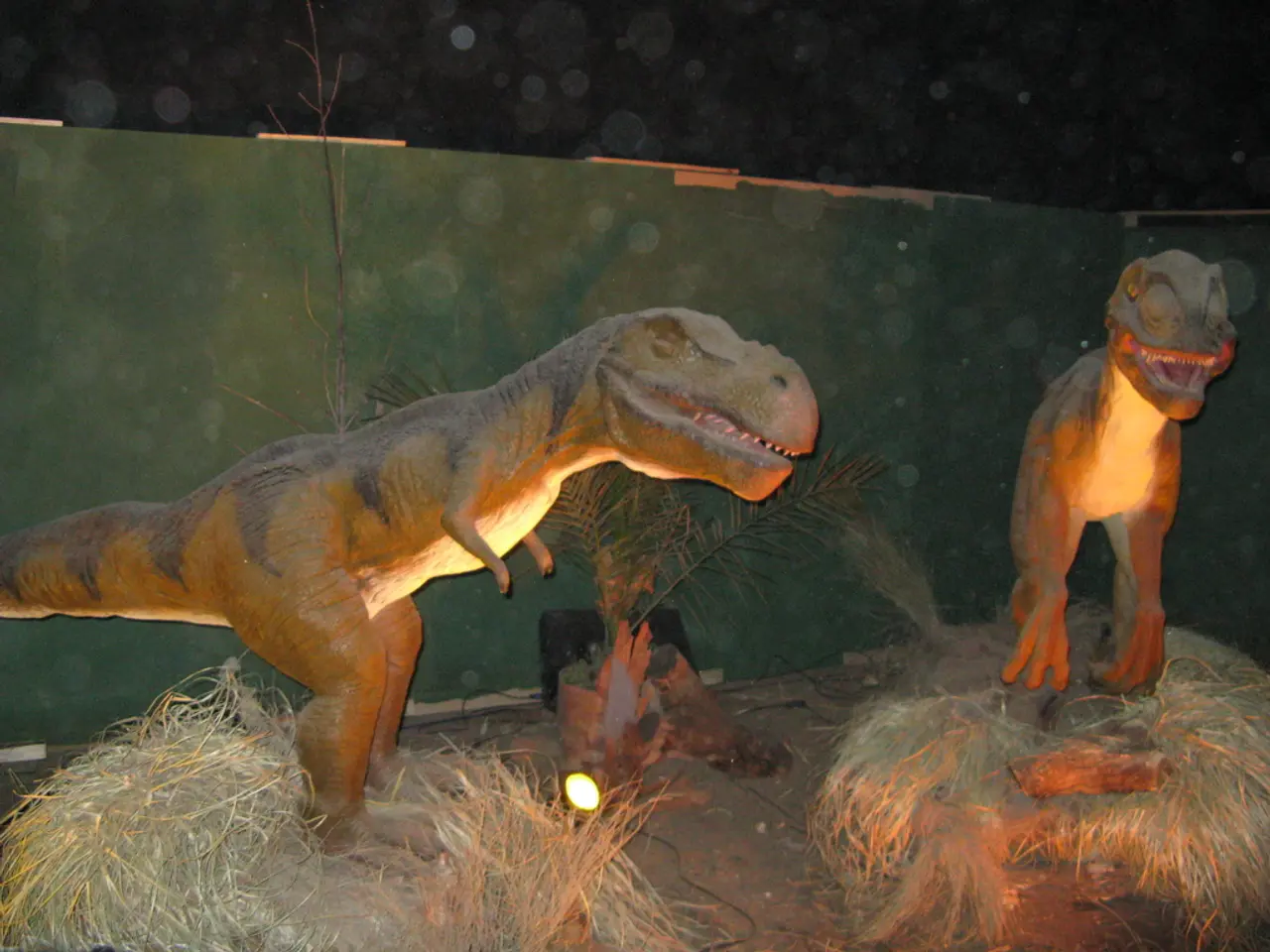Smallest North American pterosaur ever found: the 'Ash-winged dawn goddess' species. This ancient flying reptile could have perched comfortably on your shoulder.
In a groundbreaking discovery, researchers have unearthed the remains of a small pterosaur species named Eotephradactylus mcintireae, the oldest pterosaur found in North America, in a bonebed located in the Petrified Forest National Park, Arizona. This fossil-rich site provides a unique glimpse into a diverse and dynamic ecosystem that thrived approximately 209 million years ago, just before the end-Triassic mass extinction event.
The ecological community of the Triassic bonebed in Arizona offers fascinating insights into the biodiversity of the time. The region was marked by braided rivers inhabited by various fish species, including freshwater sharks and coelacanths, and a rich aquatic food web, as evidenced by fish scales and coprolites.
The terrestrial landscape was home to large ancient amphibians, some reaching lengths of up to 6 feet, indicating a significant presence of sizable amphibious predators or semi-aquatic creatures. Reptiles roamed the land, with fearsome armored herbivores and predator species resembling large crocodiles, reflecting early archosaur and related groups characteristic of Triassic faunas.
The ecosystem also included small to medium-sized terrestrial vertebrates such as early frogs and tuatara relatives. Land-dwelling turtles with thin shells and neck spikes were also found near the river channels, showcasing early stages of turtle evolution before they became fully aquatic.
The discovery of Eotephradactylus mcintireae adds to the known diversity of flying reptiles in this ecosystem, suggesting a complex aerial component that may have captured insects or small vertebrates. The presence of this pterosaur, along with other groups like frogs, lizard relatives, and turtles, is a first occurrence in the fossil record.
The entire assemblage from this bonebed (approximately 1,200 fossils) offers a snapshot of an environment in flux, just before the end-Triassic mass extinction. Seasonal flooding events likely contributed to the burial and preservation of this snapshot of life. The diversity of vertebrates, from fish and amphibians to reptiles and pterosaurs, highlights a rich ecological community adapted to a semi-arid environment with braided rivers prone to seasonal floods.
These findings help researchers understand the animals that lived before the end of the Triassic period, which was likely caused by a mass extinction event triggered by volcanic eruptions. The cache of Arizona fossils included giant amphibians, freshwater sharks, armored crocodile-like creatures, and one of the oldest known turtle fossils. The pterosaur jaw was discovered by volunteer Suzanne McIntire in 2013, and the species name of the pterosaur honors her discovery. E. mcintireae and early pterosaurs were much smaller than some later members, with a size comparable to a small seagull.
This comprehensive ecosystem snapshot aids understanding of Triassic biodiversity and the environmental pressures before one of Earth's major extinction events. The discovery of Eotephradactylus mcintireae serves as a testament to the richness of life that once thrived in the Arizona desert, offering valuable insights into the evolution of life on Earth.
[1] The study describing this lost ecosystem was published in the journal PNAS on July 7. [2] The distinctive teeth and jaw anatomy of the fossil confirmed it as a pterosaur. [3] Initially, researchers doubted if the fossil was a pterosaur due to the lack of previous findings in North America and in river sediment. [4] The "ash-winged dawn goddess" (Eotephradactylus mcintireae) is named partly after volcanic ash found in the fossil bed and Eos, the Greek goddess of the dawn. [5] At the time, the semi-arid landscape was marked with small rivers and channels that were likely prone to flooding. Researchers suspect that a flood washed over the tiny pterosaur and other animals living in the region at the time, burying their bodies in sediment and ash.
- The study of the diverse Triassic ecosystem in Arizona, as detailed in the journal PNAS publication on July 7, also highlights the presence of space-and-astronomy related technological advancements, since the fossils were analysed using sophisticated technology like CT scanners and 3D printing to recreate the structures of extinct species.
- Furthermore, the discovery of Eotephradactylus mcintireae, a small pterosaur discovered in a river sediment, underscores the importance of scientific research in understanding the evolution of early flying reptiles, contributing to breakthroughs in the field of science and aerospace technology, as these ancient creatures might have had characteristics akin to the wings of modern aircraft.




